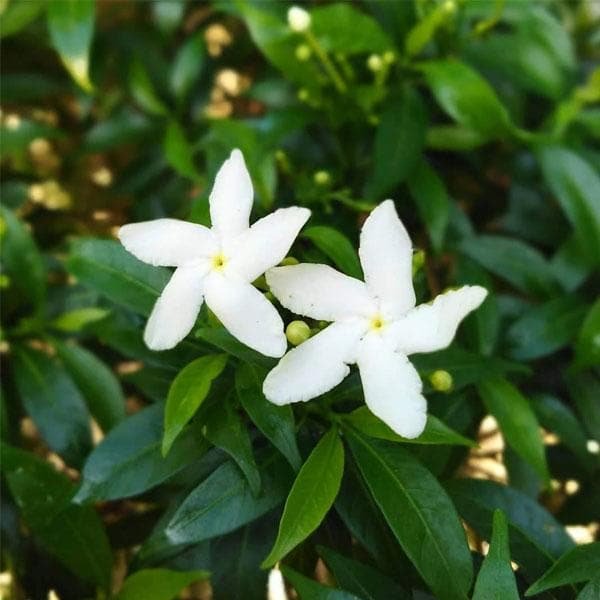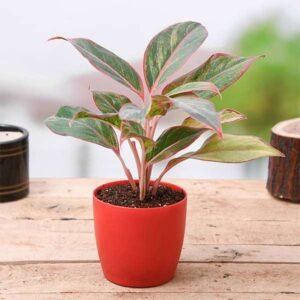Description
Tiger Alamanda Plant: A Comprehensive Guide
Introduction
The Tiger Alamanda (Allamanda cathartica), also known as the Golden Trumpet or Yellow Bell, is a strikingly beautiful flowering plant belonging to the Apocynaceae family. Renowned for its vibrant yellow-orange blooms adorned with tiger-like streaks, the Tiger Alamanda is a showstopper in any garden or landscape. Native to the tropical regions of South America, particularly Brazil, this plant is widely cultivated for its ornamental value and resilience in warm climates.
Botanical Characteristics
The Tiger Alamanda is an evergreen vine or shrub that can grow up to 10 feet (3 meters) tall when supported by trellises or other structures. Its glossy, dark green leaves are arranged oppositely or in whorls, providing a lush backdrop to its bright blossoms. The plant’s stems are flexible yet sturdy, allowing it to climb or spread depending on its environment.
The plant’s signature feature is its trumpet-shaped flowers, which are typically 3 to 5 inches (7 to 12 cm) in diameter. The petals are fused, forming a tubular structure that flares outward, revealing deep orange streaks against a vibrant yellow background—resembling the markings of a tiger, hence its name. Blooming primarily in the warmer months, the Tiger Alamanda is a prolific bloomer that adds vivid color and life to gardens.
Growth and Care Requirements
Tiger Alamanda thrives in tropical and subtropical climates where temperatures remain above 50°F (10°C). It prefers full sunlight to produce its best blooms, though it can tolerate partial shade. The plant flourishes in well-drained soil with a slightly acidic to neutral pH.
Watering Needs:
Tiger Alamanda requires regular watering to maintain its lush foliage and continuous blooms. It is important to keep the soil consistently moist but not waterlogged. Overwatering can lead to root rot, while underwatering may cause leaf drop and reduced flowering.
Fertilization:
A balanced, water-soluble fertilizer applied monthly during the growing season supports vigorous growth and vibrant flowering. Reducing feeding during the dormant months helps prevent nutrient buildup in the soil.
Pruning and Maintenance:
Pruning is recommended after the main flowering period to maintain shape and encourage new growth. Removing dead or damaged stems also helps improve air circulation and prevents disease.
Propagation
Tiger Alamanda can be propagated through cuttings or seeds. Stem cuttings taken during the spring or early summer root easily when placed in moist soil or water. Seeds require a warm, moist environment to germinate and can take several weeks to sprout.
Pests and Diseases
While generally hardy, Tiger Alamanda is susceptible to common pests like aphids, whiteflies, and spider mites. Regular inspection and the application of organic insecticides or neem oil can help manage these issues. Fungal infections like powdery mildew may also occur in overly damp conditions, which can be mitigated by proper spacing and air circulation.
Landscaping and Uses
The dramatic blooms of the Tiger Alamanda make it an excellent choice for trellises, fences, and arbors. Its bright flowers attract pollinators such as bees and butterflies, enhancing the ecological value of a garden space. Additionally, it can be grown in containers for patios or balconies, provided it receives adequate sunlight.
Toxicity Warning
It is important to note that all parts of the Tiger Alamanda plant are toxic if ingested. This includes the sap, which may cause skin irritation. Care should be taken when handling the plant, especially around children and pets.
Conclusion
The Tiger Alamanda is a spectacular addition to any garden, offering vivid color and lush foliage throughout the growing season. With proper care, it can flourish and become a focal point in tropical and subtropical landscapes. Its unique, tiger-striped flowers are not only visually stunning but also a testament to the diverse beauty of tropical flora.





 Aglaonema siam aurora - Plant
Aglaonema siam aurora - Plant 

Reviews
There are no reviews yet.